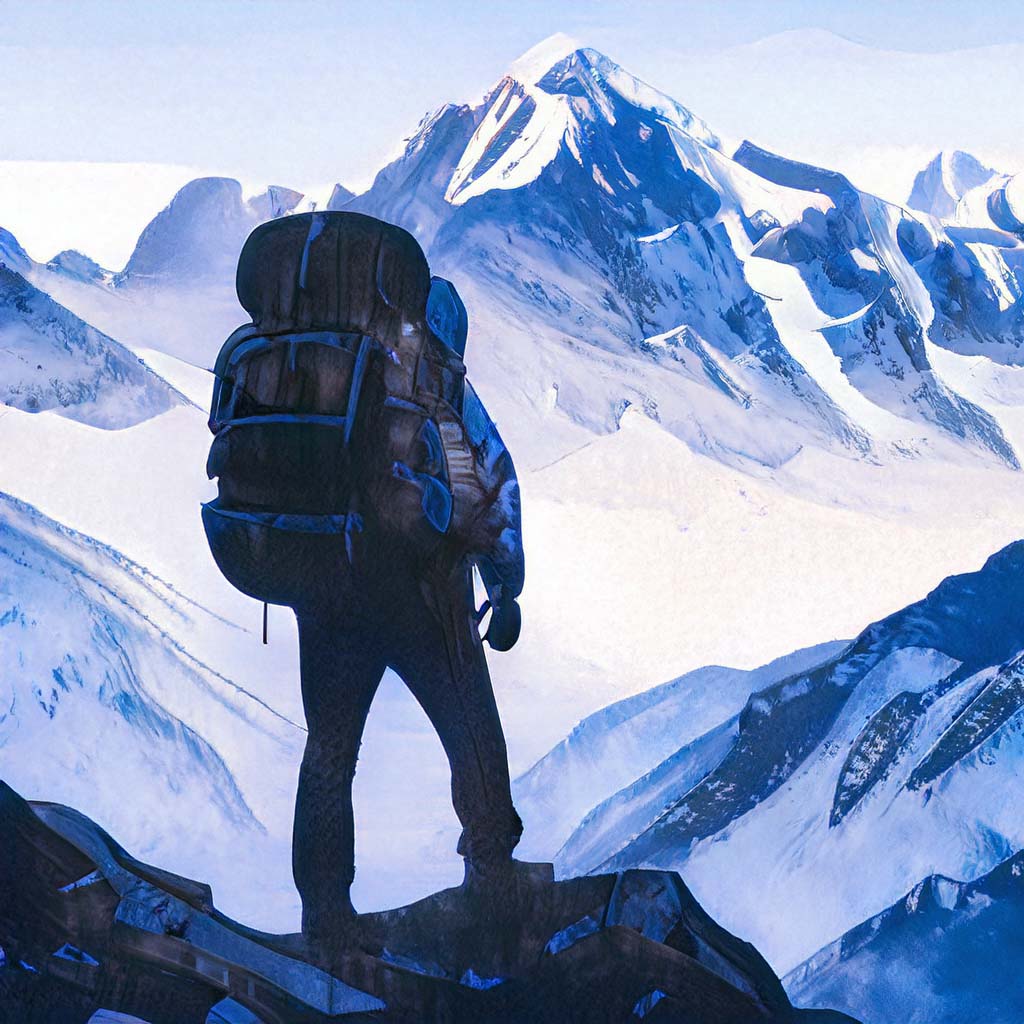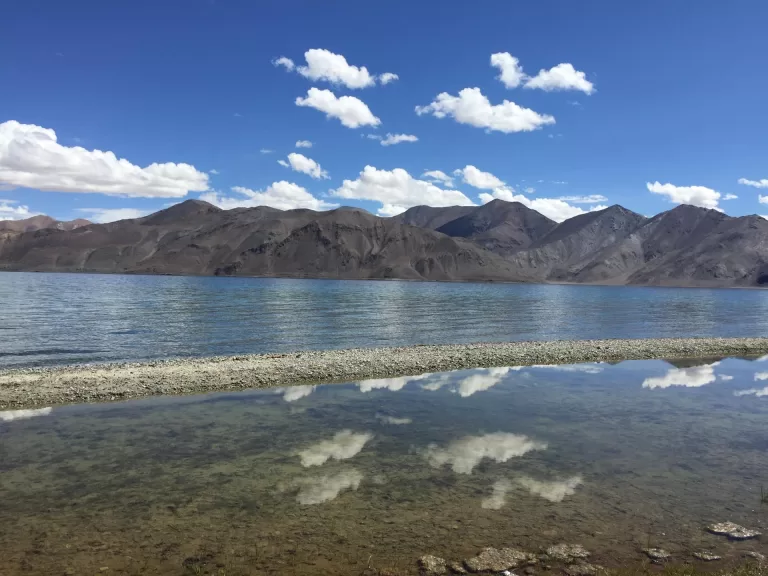Embark on an epic adventure with our guide to backpacking in the Himalayas. Discover breathtaking landscapes, cultural richness, and trekking wonders.
The Himalayas, a majestic mountain range that stretches across five countries, is a paradise for backpackers worldwide.
Its snow-capped peaks, glacial lakes, verdant valleys, and rich biodiversity offer an unparalleled trekking experience.
This guide will walk you through the essentials of backpacking in the Himalayas, equipping you with the necessary knowledge and insights to embark on your adventure.
Table of Contents
Choosing Your Trek
First and foremost, selecting the right trek is crucial. The Himalayas offer a variety of treks, each unique in its beauty and challenge.
For beginners, the Poon Hill trek in Nepal or the Triund trek in India are excellent choices, offering manageable distances and breathtaking panoramas.
For seasoned trekkers, the Everest Base Camp trek in Nepal or the Chadar trek in India offer a more challenging terrain and an unbeatable sense of accomplishment.
Planning Your Itinerary and Acclimatization
Remember, the Himalayas are not just about high altitudes and strenuous trekking; they are also about vibrant local cultures and serene landscapes.
Plan your itinerary to include rest days for acclimatization and exploration of local villages. Engage with locals, try regional cuisines, and learn about the history and customs of the region.
This will enrich your travel experience and help you acclimatize better to the altitude.

Packing for the Trek
When backpacking in the Himalayas, packing light yet adequately is key.
Essentials include a good quality backpack, sturdy hiking boots, warm clothing, a first-aid kit, sun protection, and reusable water bottles.
Do not forget to pack high-energy snacks, a reliable map, and a portable charger. Remember, the weather in the mountains can be unpredictable, so pack layers and waterproof gear.
Staying Safe
Your safety is paramount. Keep abreast of the weather forecasts and trail conditions. Always inform someone about your trekking plan and expected return date.
It’s recommended to hire a local guide who knows the terrain well and can navigate through potential risks. Also, understand the symptoms of altitude sickness and take necessary precautions.
Leaving No Trace
Lastly, but most importantly, practice sustainable tourism. The Himalayas are a precious ecosystem, and it’s our responsibility to preserve its pristine nature.
Follow the ‘Leave No Trace’ principles – carry back your trash, avoid disturbing wildlife, and respect local customs and heritage.
Backpacking in the Himalayas is not just a physical journey; it’s a spiritual quest that leaves you with an invigorating sense of freedom and humility.
It’s a dance with nature where you tread lightly, gaze in wonder, and leave with memories etched in your heart.
FAQs about Backpacking in the Himalayas
1. Q: What is backpacking in the Himalayas?
Backpacking in the Himalayas is a form of adventurous travel that involves carrying a backpack and exploring the stunning mountainous region of the Himalayas on foot. It often includes trekking, camping, and experiencing the unique culture of the local communities.
2. Q: How do I prepare for a backpacking trip in the Himalayas?
Proper preparation is essential. Start by researching the specific region you plan to visit, check the weather conditions, acquire the necessary permits, invest in quality gear, and ensure you are physically fit for the challenging terrain and altitude.
3. Q: What are the best trekking routes in the Himalayas for backpackers?
There are numerous trekking routes in the Himalayas catering to different skill levels. Some popular ones include the Everest Base Camp trek, Annapurna Circuit, Manaslu Circuit, and the Valley of Flowers trek. Choose a route that aligns with your preferences and abilities.
4. Q: Is it safe to backpack in the Himalayas?
While the Himalayas offer breathtaking landscapes, safety precautions are crucial. Follow established trekking routes, hire experienced guides, acclimatize properly to the altitude, and stay informed about local conditions. Always prioritize safety to ensure a positive experience.
5. Q: What essentials should I pack for a Himalayan backpacking trip?
Your packing list should include appropriate clothing for varying weather conditions, sturdy hiking boots, a reliable backpack, a sleeping bag, a first aid kit, water purification tools, and essential documents such as permits and identification. Be mindful of weight and pack efficiently.
6. Q: How should I acclimatize to the high altitudes in the Himalayas?
Acclimatization is crucial to prevent altitude sickness. Gradually ascend to higher altitudes, take rest days, stay hydrated, and pay attention to your body’s signals. If symptoms of altitude sickness occur, descend to a lower altitude immediately.
7. Q: Are permits required for backpacking in the Himalayas?
Yes, permits are typically required for trekking in the Himalayas. The specific permits vary depending on the region and trekking route. Research and obtain the necessary permits well in advance to ensure a smooth and legal journey.
8. Q: What is the best time of the year for backpacking in the Himalayas?
The best time for backpacking in the Himalayas is generally during the pre-monsoon (spring) and post-monsoon (autumn) seasons. These periods offer favorable weather conditions, clear skies, and optimal visibility, making them ideal for trekking and enjoying the breathtaking scenery.
9. Q: Can I backpack in the Himalayas independently, or should I hire a guide?
While some experienced trekkers choose to go independently, hiring a guide is recommended, especially for those unfamiliar with the region. A guide enhances safety, provides cultural insights, and assists in navigating the challenging terrain.
10. Q: How can I respect the local culture while backpacking in the Himalayas?
Show respect for local customs and traditions by learning about the culture beforehand. Dress modestly, seek permission before taking photographs, and interact respectfully with the locals. Minimize your environmental impact by following “Leave No Trace” principles.


0 Comments